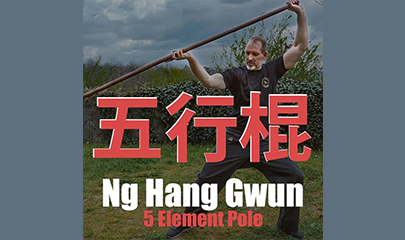Guard passes to beat the butterfly by Shawn Williams
$14,00 $6,00
Guard passes to beat the butterfly by Shawn Williams – Digital Download!
Let’s embark on a captivating adventure to uncover remarkable insights that spark your curiosity and elevate your understanding

Guard passes to beat the butterfly by Shawn Williams
Overview

Guard passes to beat the butterfly by Shawn Williams
In the realm of Brazilian Jiu-Jitsu (BJJ), practitioners frequently encounter various guard systems, each presenting unique challenges and opportunities for control. One such position is the butterfly guard, renowned for its versatility, control, and the potential for sweeping the opponent into dominant positions. According to Shawn Williams, an esteemed figure in the BJJ community, mastering specific techniques is crucial for successfully overcoming the butterfly guard. His insights not only simplify the complexities involved in passing this guard but also provide practitioners with various strategies that maximize their effectiveness during practice and competition. This article delves deeply into the intricacies of the butterfly guard, challenges faced in passing it, and the strategies recommended by Shawn Williams, particularly emphasizing guard passes tailored to counter the butterfly’s strengths.
Overview of Butterfly Guard
The butterfly guard is a dynamic position embraced by grapplers at all levels, characterized by its use of hooks and elevation to control the opponent effectively. Just as a butterfly flaps its wings, generating movement and beauty, this guard allows the individual on the bottom to fluidly transition between sweeps, submissions, and escapes. Picture a powerful dance: the bottom player employs their legs the wings to lift and maneuver their opponent, keeping them off balance and vulnerable. The guard is often used as a springboard for offensive techniques, allowing the person on the bottom to elevate their opponent and initiate sweeps to dominant positions.
Key features that underscore the butterfly guard’s effectiveness include:
- Elevating Capacity: The ability to lift an opponent allows for a multitude of sweeps and transitions. This action is akin to a catapult, propelling the guard player into advantageous positions.
- Postural Control: By controlling the opponent’s posture with hooks, the guard player can disrupt their balance, making passing difficult and creating openings for attacks.
- Versatile Approaches: This guard can be adapted for defensive maneuvers as well as offensive sweeps, demonstrating its multifaceted nature.
- Dynamic Techniques: The movements involved in the butterfly guard require the guard player to remain active, allowing for continuous transitions between various techniques, resulting in a fluid grappling experience.
All these aspects make the butterfly guard a fundamental skill in the arsenal of any serious BJJ practitioner.
Characteristics of Butterfly Guard
The butterfly guard is distinguished by several critical characteristics that contribute to its popularity among BJJ practitioners. Understanding these attributes can better prepare those looking to pass this guard effectively.
- Elevation Potential: The use of hooks in the butterfly guard allows the guard player to generate significant upward force, making it possible to elevate their opponent. This lift can lead to various sweeps that propel the guard player into advantageous positions. Think of this as a seesaw in motion; just as one person pushes down on one side, the other side lifts and creates opportunities for movement.
- Control of Opponent’s Posture: The butterfly guard player wields substantial control over their opponent’s posture. By anchoring their hooks into the opponent’s thighs, they can easily disrupt the balance, leading to errant movements or ineffective attempts to pass. It’s like holding the reins of a horse; controlling its head can directly influence its path.
- Versatility: Unlike more static guard positions, the butterfly guard facilitates transitions. Its very nature encourages movements such as sweeps, submissions, and positional changes. It serves as a platform from which the guard player can launch into various offensive maneuvers or defend against advances, showcasing a wide range of possibilities.
- Dynamic Movement: The butterfly guard engages the grappler’s entire body, allowing them to exploit angles and leverage. The constant movement creates a dynamic interplay that keeps both practitioners actively involved and slightly unpredictable, akin to a dance duet where the movements of one dictate the steps of the other.
In comprehending the butterfly guard’s characteristics, practitioners can better strategize their passing techniques, aligning their approaches with the guard player’s capabilities while effectively navigating the challenges presented.
Common Challenges in Passing Butterfly Guard
Despite its many advantages, the butterfly guard also presents numerous challenges for those attempting to pass it effectively. Recognizing these challenges is critical for developing tactical responses during a match:
- Elevation of the Opponent: One of the most significant challenges when facing a butterfly guard is the guard player’s propensity to lift their opponent using hooks. This elevation can lead to unexpected sweeps, making it essential for the passer to maintain their balance. Imagine a tightrope walker: if their center of gravity shifts even slightly, they risk falling.
- Control of Angles and Grips: Successful control of the opponent often relies on the guard player establishing strong overhooks or underhooks. These grips can limit the passer’s range of motion and hinder their ability to reposition. It’s like trying to maneuver a ship through narrow canals; without skilled navigation, progress can become nearly impossible.
- Flat Back Positioning: If the guard player succeeds in flattening out the passer, they can leverage various submissions and sweeps. This shift in positioning can become a critical moment, pivoting the balance of power. The passer must remain aware of their body positioning, likening it to a chess player ensuring that their king remains protected while strategizing their next move.
- Guard Recovery: Should the passer attempt to disengage from a position without maintaining control, the butterfly guard allows the guard player to recover quickly, exploiting openings for sweeps. This quick recovery resembles a tightly coiled spring, ready to unleash powerful counteractions at a moment’s notice.
Overall, practitioners must cultivate a strategic mindset while grappling with these challenges, leading to more efficient and effective passing techniques.
Techniques for Passing Butterfly Guard
Successfully passing the butterfly guard requires not only an understanding of the challenges but also specific techniques that practitioners can employ. The following methods illustrate effective passing strategies:
- Establishing Pressure: Lowering the upper body and placing significant downward pressure on the opponent helps to flatten their back on the mat. This technique is vital because it neutralizes their ability to utilize hooks effectively. Visualize this pressure as an anchor, keeping a ship steady in tumultuous waters.
- Controlling the Hips: Gaining control over the legs and hips of the opponent can prevent them from executing sweeps. Techniques like hugging their legs or sprawling out create stabilization, allowing the passer to open opportunities for advancing positions. Consider this akin to wrestling with an octopus the tighter the grip on its limbs, the less likely it is to maneuver out of control.
- Body Lock Pass: This approach involves securing double underhooks to dominate the opponent’s upper body, followed by executing a sprawl to transition through the guard. This technique highlights the importance of creating strong, controlled movements to ensure effective triangulation around the guard player’s body.
- Knee Slice Pass: By slicing the knee across the opponent’s body while maintaining upper body pressure, this pass minimizes the chance of recovery while creating openings for the passer to advance. Practitioners should think of their movements like a well-timed act in a performance, where each motion leads naturally into the next.
Engaging with these techniques will allow practitioners to overcome the complexities posed by the butterfly guard, leading to a more comprehensive grappling repertoire.
Smash Pass Technique
One of Shawn Williams’ signature approaches to passing the butterfly guard is the smash pass, a method designed to overwhelm the opponent’s hooks. Here’s a detailed overview of executing the smash pass effectively:
- Initial Position: As you engage your opponent in butterfly guard, ensure your base is strong and stable. This foundational stance is a key element that supports the rest of your technique.
- Flattening the Opponent: The first goal in the smash pass is to apply downward pressure with your weight to flatten your opponent. When their back is flat on the mat, their hooks lose effectiveness, allowing you to control their movements better. Envision a heavy object pressing down against a balloon, limiting its shape and ability to bounce back.
- Driving Forward: With hands positioned on the mat, shift your weight forward over the opponent’s legs. By forcing them to carry your weight, you destabilize their position, which weakens their ability to leverage hooks against you. This forward-driving motion resembles a bulldozer clearing a path a deliberate action designed to reshape the environment in your favor.
- Controlling the Hooks: While applying pressure, systematically work to neutralize one or both of the opponent’s hooks. Lowering your frame and using your body weight helps to mitigate their control, providing you with an opening or pathway to complete the pass successfully.
The smash pass is a fundamental technique that lays the groundwork for increasing effectiveness when facing an opponent who employs a butterfly guard.
Alternative Passing Options
In addition to the smash pass, other effective strategies exist for passing the butterfly guard. Here, we explore several alternative methods while considering their applications:
- Body Lock Pass: Transitioning to a body lock empowers the passer to maneuver around the guard without giving up control. Following initial flattening of the opponent, sprawling a leg and sliding into a tighter position effectively circumvents the butterfly guard.
- Directional Shifting: When an opponent pushes your head toward one side, utilize a quick pivot to counter and shift your body weight in the opposite direction. This tactical maneuvering takes advantage of their momentum, enabling successful passing transitions.
- Knee Pummel Into Headquarters: Standing up and executing a knee pummel can be an effective strategy to gain advantageous positioning. This motion sets up various passing options, including knee cuts and torreando passes, emphasizing the adaptability required in dynamic scenarios.
- Tripod Passing: This passing technique emphasizes maintaining a low base while keeping one’s head down. Staying under the opponent’s control effectively limits their ability to interrupt your pass while allowing for maneuvering into passing positions.
The alternative passing options provide a rich arsenal for grapplers seeking effectiveness against the butterfly guard, as they emphasize fluidity and adaptability within their game.
Key Details for Effective Execution
To ensure that passing techniques yield successful results during a live rolling or competition context, several key details should be emphasized:
- Body Mechanics: Practitioners must focus on maintaining a strong and balanced posture. This is crucial because a solid foundation allows for better control of movements and minimizes vulnerabilities to counterattacks.
- Grip Control: Effective grip is paramount in bypassing the butterfly guard. Variations in grip positions collar grips, sleeve grips, or underhooks can significantly affect the passer’s ability to manipulate and control their opponent.
- Stay Active: Engaging dynamically with movement creates opportunities for adjustments and counters. Practitioners should think of their strategy like a seasoned dancer, always prepared to pivot and adapt depending on the situation.
- Awareness and Timing: Practitioners must develop an acute awareness of weight shifts and body movements of their opponent. This situational awareness is analogous to a chess player anticipating their opponent’s moves, allowing for timely reactions that can shift the momentum of the match.
- Transitions to Dominant Positions: Once the guard pass is initiated effectively, the passer should remain focused on quickly transitioning to dominant positions such as side control or mount. Planning ahead during execution ensures minimal resistance from the opponent.
Focusing on these key details enhances the execution of passing techniques against the butterfly guard, promoting a higher chance of success in dynamic matches.
Evaluating Shawn Williams’ Techniques
Shawn Williams’ teachings on passing the butterfly guard highlight principles that ensure effectiveness and adaptability. His methods are grounded in strategic insights that allow for nuanced responses to common challenges faced during grappling engagements. Here’s a closer look at some of the core attributes of Williams’ techniques:
- Establishing Control: Williams emphasizes obtaining control early on in the engagement. Achieving a dominant position at the outset creates an advantage for successful pass execution. This aligns with the broader principles of BJJ, which prioritize positional control first and foremost.
- Pressure Dynamics: The notion of applying consistent pressure remains central to Williams’ instruction. By learning to pin down an opponent’s hips and create weight-bearing leverage, practitioners can mitigate the guard player’s ability to initiate sweeps or regain advantageous positioning.
- Responding to Opponent Movements: Williams shares insights on how to adapt to varying tactics employed by guard players. For example, if opponents secure double underhooks or attempt to sweep, knowing how to transition and reposition becomes essential for effective guard passing.
- Variety of Passing Techniques: Williams presents a variety of options when passing the butterfly guard; his systematic approach allows practitioners to seamlessly transition between different passes based on opponents’ movements. This flexibility contributes to a more adaptable grappling game.
By evaluating Shawn Williams’ teachings through a lens of adaptability and controlled techniques, practitioners can recognize the efficacy in mastering his methods and applying them to their training.
Consistency and Effectiveness
Williams’ techniques exhibit a profound consistency that stems from the principles of control, positioning, and timing. His methodology translates effectively across different facets of Brazilian Jiu-Jitsu. In examining the core attributes, we find:
- Application Under Pressure: Williams’ strategies are designed to remain functional even when faced with resistance or pressure from opponents. Whether executing a smash pass or transitioning between techniques, the underlying principles hold strong, allowing practitioners to maintain effectiveness.
- Utilizing Body Weight: A critical part of Williams’ passing strategies lies in body weight distribution. By committing weight onto the opponent and utilizing core mechanics, practitioners can neutralize the butterfly guard’s inherent strengths and maximize their passing potential.
- Focus on Angles over Flexibility: The emphasis on strategic angles rather than relying on physical attributes resonates through Williams’ instruction. This universality ensures that the techniques can be beneficial regardless of a practitioner’s physical prowess, demonstrating accessibility to grapplers of various shapes and sizes.
- Building a Foundations Framework: The structured introduction of techniques ensures that practitioners can absorb and apply the fundamentals effectively. Williams teaches core principles that practitioners can refine and return to, promoting long-term development in grappling.
Maintenance of consistency and effectiveness through strategic applications ensures that practitioners can develop their skills in a holistic manner and are equipped to face diverse challenges on the mats.
Comparison with Other Guard Passing Approaches
In comparing Williams’ techniques with other guard-passing methodologies, a clear distinction emerges in his approach to addressing the butterfly guard specifically:
- Strategic Movements: Williams encourages precision and strategic movements over mere physicality. Compared to approaches focused on sheer strength or brute force that often fall short against technical opponents, his emphasis on grace and adaptability promotes a more intelligent grappling strategy.
- Flexibility and Adaptability: Other passing systems might operate on a binary understanding of “pass or fail,” whereas Williams’ techniques allow for transitioning and adapting based on the opponent’s reactions. This fluidity is essential in the context of combat sports, where unpredictability reigns.
- Focus on Control: Williams stresses the importance of maintaining control at all times; unlike some techniques that might prioritize quick passing, his methods focus on ingraining control early in the engagement. This leads to more successful outcomes, as established positions provide greater opportunity for further advancement.
- Broader Applicability: The principles behind Williams’ passing strategies extend beyond the butterfly guard; they can be effective against various guard systems. Many traditional passing approaches often restrict themselves to specific scenarios, illustrating the versatility Williams offers.
In this comparative analysis, Williams’ techniques shine due to their efficiency, adaptability, and emphasis on control offering a robust approach to guard passing that practitioners can rely on in various circumstances.
Case Studies and Application
Real-world application of Shawn Williams’ techniques reveals their effectiveness in various competitive contexts. The following insights highlight the successes faced by practitioners employing his teachings against the butterfly guard:
- Competitive Successes: Many practitioners have experienced improved performances during competitions after integrating Williams’ approaches into their training regimens. For instance, a blue belt reported being able to consistently pass seasoned opponents’ butterfly guards during recent tournaments using techniques such as the smash pass and body lock pass.
- Adaptation in Sparring: Through regular sparring sessions, practitioners have noted that employing Williams’ strategies led to better positional control and an increased success rate for guard passing overall. Specifically, the knee slice pass, when executed with awareness of body mechanics, yielded enhanced results in rolling.
- Teaching to Beginners: Newer athletes, while learning from Williams’ instructional materials, have discovered that his systematic approach simplifies the complexities involved in passing the butterfly guard. Feedback indicates a quicker understanding and application of the techniques due to their clear, structured nature.
- Research and Evidence: Studies conducted among practitioners who actively engage in Williams’ techniques demonstrated a significant increase in guard pass success rates, emphasizing the importance of technique memorization and precision over sheer strength.
These case studies illustrate that Williams’ teachings can lead to tangible improvements in practitioners’ grappling outcomes, encouraging them to engage in his instructional resources for continued development.
Real-Life Situations Utilizing Techniques
In the competitive landscape of Brazilian Jiu-Jitsu, practical application of techniques often dictates the outcome of matches. Here are scenarios demonstrating the successful utilization of Shawn Williams’ methods:
- Match Against a Skilled Opponent: During a high-stakes competition, a practitioner faced an opponent known for their butterfly guard abilities. By implementing the smash pass followed by transitioning into a knee slice, the practitioner successfully bypassed their guards and secured a dominant position.
- Training Compatibility: In a team training environment, practitioners have employed Williams’ techniques when sparring against various guards. Successfully utilizing body lock passes against butterfly guard practitioners allowed them to experiment with timing and pressure applications in a controlled setting.
- Adapting Techniques: During open mat sessions, grapplers who initially struggled with passing the butterfly guard found success by adapting the concepts learned from Williams. By focusing on consistent pressure and position control, they experienced fewer sweeps and setbacks while rolling against skilled guard players.
- Feedback Application: One athlete reported consistently reviewing instructional videos from Shawn Williams and applying those insights during practice, leading to incremental improvements in their performance. Feedback loops within training environments helped refine the execution of the smash and body lock passes.
These realistic applications highlight the effectiveness of employing Williams’ teachings in various competitive and practice environments, reinforcing the idea that proper technique mastery leads to greater success.
Feedback from BJJ Practitioners
To comprehend the effectiveness of the techniques promoted by Shawn Williams, it is essential to consider the feedback and experiences shared by practitioners who have applied these methods:
- Knee Slice Pass Effectiveness: A significant number of practitioners have applauded the knee slice pass for its ability to penetrate through the butterfly guard without compromising balance. Many cite that the timing and precise execution, as taught by Williams, is vital for maintaining control throughout the process.
- Leg Drag Pass Value: Practitioners frequently share success stories regarding the leg drag pass, noting how it demands precise timing to redirect the opponent’s leg while maintaining a low posture. Feedback emphasizes the importance of understanding the opponent’s movements to nullify elevation attempts effectively.
- Combination Techniques: Feedback indicates that skilled grapplers who combine different passes, such as transitioning from a knee slice to a leg drag, have greater success during high-pressure situations. The ability to seamlessly transition draws admiration from training partners and opponents alike.
- Development Through Drilling: Many practitioners report noticeable improvements in their passing game after regular drilling of the techniques covered by Williams. They advocate for the importance of repetition and consistency in embedding these techniques into muscle memory, leading to increased confidence in competitions.
The positive testimonials from BJJ practitioners emphasize the relevance and applicability of Shawn Williams’ techniques, reinforcing their importance in the journey toward proficient guard passing.
Conclusion on Best Practices
Mastering the techniques for passing the butterfly guard is fundamental for any BJJ practitioner aiming to elevate their grappling skills. The teachings by Shawn Williams provide a clear guiding framework, emphasizing essential principles of pressure, control, and situational adaptability.
Practitioners should focus on:
- Mastering key techniques such as the smash pass, knee slice, and body lock.
- Acknowledging the common challenges posed by the butterfly guard to preemptively strategize.
- Regularly drilling these techniques and adapting them within sparring situations to build proficiency.
- Continuously reviewing feedback from training partners and coaches to refine execution and timing.
By embracing these best practices, practitioners can significantly enhance their guard passing efficacy and navigate the complexities of the butterfly guard with confidence.
Summary of Key Techniques
As highlighted in this detailed exploration, several key techniques are paramount in effectively passing the butterfly guard:
- Smash Pass: Focused on applying pressure to flatten the opponent’s back and neutralizing their hooks.
- Knee Slice Pass: Emphasizing body weight distribution and timing to seep through the guard.
- Body Lock Pass: Using double underhooks and sprawling techniques to bypass the guard efficiently.
- Leg Drag Pass: Aiming to redirect the opponent’s leg while maintaining a low posture for effective passes.
Recommendations for Practitioners
To further enhance proficiency in passing the butterfly guard, practitioners should consider the following recommendations:
- Focus on Fundamentals: Ensure a solid grasp of the foundational techniques before moving on to more complex variations. Foundations create opportunities to explore advanced options.
- Emphasize Drilling: Regular drilling in controlled environments helps develop muscle memory and familiarity with movements, which is vital during competitive scenarios.
- Stay Adaptable: Being willing to adjust techniques based on the opponent’s reactions fosters adaptability, making it easier to execute strategies effectively.
- Continuous Learning: Engage with instructional content from reputable sources, including videos, seminars, and workshops that focus on guard passing techniques.
- Seek Feedback: Regularly solicit input from coaches and training partners to refine your execution and approach. Peer feedback is critical in identifying strengths and weaknesses in technique application.
Incorporating these recommendations into daily practice enhances overall performance and prepares practitioners for the unpredictable dynamics faced in grappling contests.
Frequently Asked Questions:
Innovation in Business Models: We use a group purchase approach that enables users to split expenses and get discounted access to well-liked courses. Despite worries regarding distribution strategies from content creators, this strategy helps people with low incomes.
Legal Aspects to Take into Account: Our operations’ legality entails several intricate considerations. There are no explicit resale restrictions mentioned at the time of purchase, even though we do not have the course developers’ express consent to redistribute their content. This uncertainty gives us the chance to offer reasonably priced instructional materials.
Quality Control: We make certain that every course resource we buy is the exact same as what the authors themselves provide. It’s crucial to realize, nevertheless, that we are not authorized suppliers. Therefore, the following are not included in our offerings: – Live coaching sessions or calls with the course author.
– Entry to groups or portals that are only available to authors.
– Participation in closed forums.
– Straightforward email assistance from the writer or their group.
Our goal is to lower the barrier to education by providing these courses on our own, without the official channels’ premium services. We value your comprehension of our distinct methodology.
Be the first to review “Guard passes to beat the butterfly by Shawn Williams” Cancel reply
You must be logged in to post a review.
Related products
Martial Arts
The Iron Fortress Become an Impenetrable Force – Virtually Overnight By Russell Stutely



















Reviews
There are no reviews yet.